CUFF 2021: Bad Attitude: The Art of Spain Rodriguez Review
Writer Marko Djurdjic
About halfway through Bad Attitude: The Art of Spain Rodriguez, Susan Stern, the film’s director and producer—and wife of Spain Rodriguez—films herself holding a drawing of herself done by Rodriguez. The drawing, which features a naked Stern in garters staring back at the viewer, is accompanied by Stern’s voiceover, asking a poignant and essential question:
“Did I make this film to defend Spain, or to defend myself?”
An opinionated provocateur, Spain Rodriguez always believed in comics as a serious art form, one which could be—and ultimately would be—intellectualized. While his early work was rooted in science fiction and superhero lore, his later work explored diverse, more literary subjects, including a graphic biography of Che Guevara, and an exploration of California’s farm labor struggles. At 71 minutes, the film is a revved-up ride through the life of one of underground comix most polarizing and celebrated artists. Like a rock n’ roll brain come to life, the film portrays its central subject as an eccentric iconoclast driven by the promise of revolution.
Rodriguez’s expression and originality are unmistakable, and the “bad attitude” in question stems from a rebellious streak that started as juvenile delinquency, and moved the artist through biker gangs, New York’s Lower East Side, and San Francisco at its countercultural peak. The art itself—raw, intricate, beautiful, violent and vile—is lovingly portrayed by Stern, and there is a distinct sensuality to the way Stern presents Rodriguez’s meticulous images of buildings, bikers, and breasts.
Throughout the film, Stern interviews many comic artists, both underground and mainstream, including R. Crumb, Aline Kominsky-Crumb, Trina Robbins, Ed Piskor, and Art Spiegelman, who have varied responses to Rodriguez’s art and persona. Stern also features interviews with writers outside of the comics orbit, most notably Susie Bright, a feminist sex writer, Andi Zeisler, co-founder of Bitch Media, and novelist and poet Ishmael Reed. They provide a fresh take on Spain and his work, questioning some of his choices and delighting in others.
And this is one of the film’s greatest strengths, neither venerating its titular subject, nor offering any apologies for his work. Instead, it presents Rodriguez’s art as open for debate, and to scrutiny, something that the artist himself would have no doubt relished.
Although the film attempts to contextualize Rodriguez’s work in terms of his artistic legacy, it thankfully doesn’t shy away from his more irreconcilable predilections. While Stern makes a point of saying that Rodriguez was not sexist, he is nonetheless chastised for putting little effort into understanding—or supporting—the women’s liberation movement happening around him. Although feminism and women’s liberation were intrinsically connected to art and underground newspapers in the 1960’s, the film makes it abundantly clear that many male writers and artists, including Rodriguez, were seemingly threatened by the thought of female voices in underground media. Rodriguez’s reactionary, and altogether unproductive, response further demonstrates his perceived victimization, and betrays some of the revolutionary spirit he relentlessly promoted.
Rodriguez passed away in 2012, and the film eventually turns to his illness, mortality, and family. Although Spain is the titular anti-hero, Stern includes herself in the narrative, mostly through archival images and voiceover. Their daughter, Nora Rodriguez, is also featured extensively, particularly in the latter half of the film, providing insight into her father, as well as animations. In one of the film’s most poignant moments, she recounts a late interaction with her father. During her monologue, a short animated vignette of a shadow slowly begins to reveal more elements: a window, a building’s façade, and finally, the fencing around the building.
Nora’s tender animation contrasts her father’s more abrasive material, but therein lies one of the film’s central themes: that of contradiction. While Stern portrays her husband as a talented artist and countercultural rebel, she doesn’t disavow his less-than-desirable actions, artworks, and attitudes—particularly towards women and how his work depicted them. The commentary might not always be positive, but it is precisely these juxtapositions that make the film’s central character so compelling.
A person becomes a cultural figure if they can avoid obscurity, and Rodriguez’s art remains a vital representation of rebellion, attitude, and exorcism. At the end of the film, Rodriguez’s voice tells us that he has “faith in the revolution.” While that might not always be enough, it does make for some fascinating—and most importantly, powerful—art.
